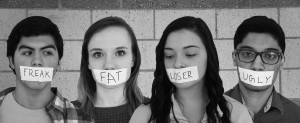 Emotionally toxic relationships typically go under the radar, as they’re not easily defined, proven, or seen – not even at Metea.
Emotionally toxic relationships typically go under the radar, as they’re not easily defined, proven, or seen – not even at Metea.
A survey asked a sample of Metea students about emotional and physical abuse, whether the abuse be from family, peers, or romantic partners. The survey first asked about their race, gender, age, number of friends, and whether or not the student had a strong support group. These factors, as shown in previous studies, correlate to emotional/physical abuse. The survey then asked students if they thought they had been emotionally abused in the past; then the showed signs of emotional abuse and asked again. After, the survey asked participants the same of physical abuse; the survey then gave students the definition of physical abuse and asked again.
The survey examined sex, race, grade level, existence of a support system, and number of friends as they related to emotional abuse and physical abuse data.
The survey revealed gender to be most important factor. Female students accounted for 81.48% of students who reported emotional abuse. Female students also accounted for 61.54% of students who reported physical abuse, too high of numbers to be a coincidence. However, keep in mind this does not mean men are the typical abusers; the survey explicitly stated the abuser could be a family member, peer, or romantic partner. Nor did the survey question whether the students had been abusive themselves. All that can assumed is that emotional abuse more commonly victimizes females than males.
The survey provided the option to identify as a non-binary gender. Two participants identified as non-binary genders. One of such students reported emotional abuse, and both reported physical abuse.
Along with gender, another major factor for emotional abuse was race. A significantly higher percentage of Black and hispanic participants reported emotional abuse. 42.86% of Hispanic participants and 45.45% of Black participants reported emotional abuse, as compared to 23.08% of White participants. This suggests racism is a contributor in emotional abuse.
Of abusive relationships (in other studies) that escalate to violence, 40% of all victims are under 18. Emotional abuse is said to be a precursor or present during physical abuse. In another study of 504 reported victims, only 18% reported physical abuse without emotional abuse, as opposed to 77% women who reported emotional abuse occurring alongside physical abuse.
Metea’s study stated 76.9% of participants who experienced physical abuse also experienced emotional abuse. 38.5% of students who experienced physical abuse said that emotional abuse occurred at the same time as the physical abuse. 23.08% said emotional abuse led to physical abuse, while 15.38% said physical abuse led to emotional abuse, and another 23.08% declined to answer.
Age was a factor that contributed greatly to physical abuse. 53.85% of participants who reported physical abuse were seniors, 30.77% juniors, 15.38% representing underclassmen.
Emotional abuse is believed to be one of the most common forms of abuse, but usually the least reported, because it is the hardest to see, prove, and identify. Of a sample of Metea Valley students, 64.7% reported experiencing at least one of eight common signs of emotional abuse. The discrepancy is that only 27.3% of Metea students reported being emotionally abused.
Over half of surveyed Metea students experienced at least one aspect of emotional abuse, yet only a quarter of participants reported emotional abuse. A common reason for not reporting emotional abuse is the fact that it has a stigma. This stigma is that emotional abuse is not really abuse. Emotional abuse is abuse, it is just as valid as the kind of abuse that leaves scars and bruises.
If you are experiencing abuse or know someone who is experiencing abuse, contact the school guidance counselors and get more information at loveisrespect.org.
By Jenna Keeney
Graphic by Iza Mikus



Jeff Silvey • Apr 9, 2014 at 11:12 am
Hey i notice that this school is very democratic, well heck you had a posture hanging in the vistors section stating democracy school. The school always lets these “kids” via the future whine about their problems.You create self help programs for kids who are to weak to go into the world with a clear mind. Kids in america make excuses for everything and now from the 1920s to now the suicide rate is tripled among males 15 to 24. I know you won’t put this out their because somehow someone is going to be offended, but for the sake of freedom of speech kids need deal with life because that’s it, A day of birth and a day to die what matters is how you feel about you every night you place your head on a pillow.